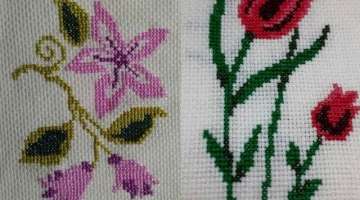The Story of "Glass Gem" Corn and The Cherokee Man Who Accidentally Created It
In an attempt to preserve his heritage, a half-Cherokee man collected and grew all the rare, indigenous varieties of corn he could find. When they crossed, they produced “glass gem” corn, that glitters with every color of the rainbow.
- 1 | 5

"That little ear of corn with the translucent, jewel-colored kernels, whose picture has recently received attention around the world, has a story… and its kinfolk from a remarkably colorful gene pool share this story," wrote the man responsible for bringing "glass gem" corn public.Glass gem corn made its debut in the world in 2012 with a viral Facebook photo, but its history is much older than that.
- 2 | 5

Several decades ago a half-Cherokee and half-Scotch-Irish Oklahoma farmer named Carl Barnes became interested in exploring his Cherokee roots. As part of that quest, he began collecting rare, old heirloom varieties of corn and growing them. Carl Barnes Over time, he began noticing ancestral types of corn re-appearing in his crops. As he isolated them, he found many of their genetic variants matched up with varieties of corn that had been lost to many of the Native American tribes – particularly those who had been relocated to Oklahoma in the 1800s.This enabled Barnes to re-introduce specific corn types to the elders of the tribes that had lost them, which helped them reclaim their cultural identities.
- 3 | 5

"The corn is, to them, literally the same as their blood line, their language, and their sense of who they are," explains Greg Schoen, the man charged with the care and distribution of glass gem corn after its Barnes' death.Barnes' newfound friendship with the tribe elders from around the country led to them gifting him many other ancient corn seeds. He incorporated them into his fields and continued to isolate and breed the most colorful kernels.In 1994, a fellow farmer named Greg Schoen met Barnes at a native plant gathering in Oklahoma. Schoen was amazed by Barnes' display of traditional ears of corn, especially those "which seemed literally to have the whole spectrum of colors."
- 4 | 5

(Photo Credit: Greg Schoen) "I knew from the start there was something magical in that seed and that I needed to get to know Carl better," Schoen wrote.Barnes had experimented with countless varieties of corn, "but to his recollection the rainbow corn was derived from his crossings of Pawnee miniature corns with an Osage red flour corn and also another Osage corn called Greyhorse … probably during the late 1980s," Schoen said. Because of Schoen's interest, Barnes gave him a handful of the rainbow seed, which Schoen grew and multiplied in his home state of New Mexico.With Barnes' blessing, Schoen grew the little rainbow corn alongside larger yellow varieties, which he hoped would help broaden and strengthen its genetics. He was right. "With each year I began to see the patterns emerge and this rainbow corn evolved into its greater potential."
- 5 | 5

(Photo Credit: Greg Schoen) In 2009, it occurred to Schoen to give samples of his best selections of the rainbow seed to Native Seeds, a nonprofit dedicated to the preservation of hundreds of indigenous crop seeds from the American Southwest and Mexico.Schoen also gave Native Seeds several photos of the rainbow corn for their archives. One of the photos was titled "Glass Gems" and the name stuck.When Native Seeds posted the photo to their Facebook page in 2012, "glass gem" rainbow corn became an international internet sensation.It's now growing all over the world, including in Kenya, Mexico, Israel and India.



















